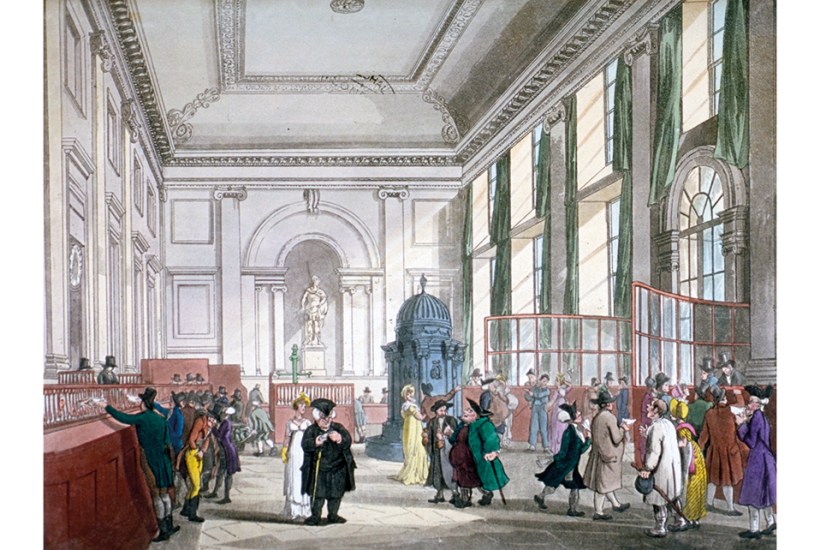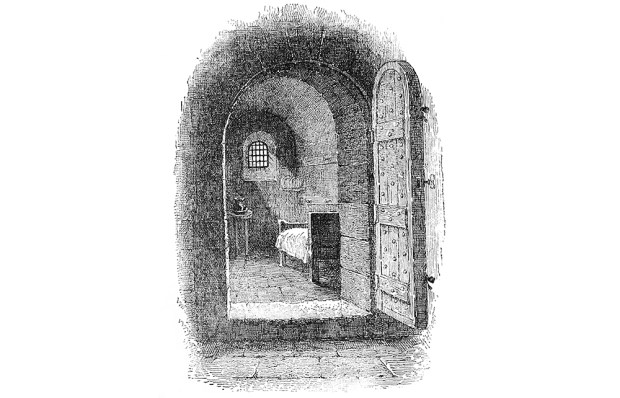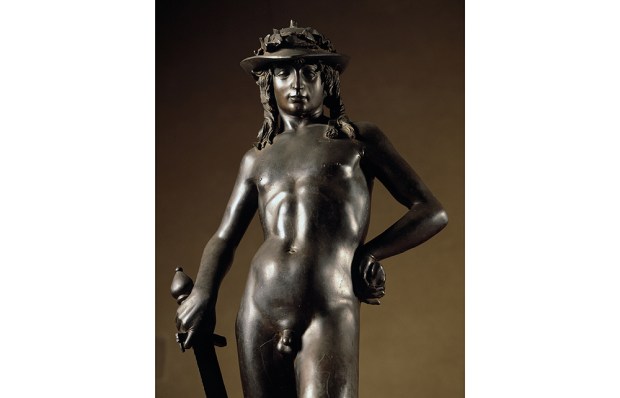The England cricket team was once greeted at an Ashes test by an Australian banner with the immortal words ‘WOTHAM IS A BANKER’, the simple genius of the line being that you knew Wotham was being insulted before you had worked out quite who Wotham was, or what exactly he was being accused of. But, as Anne Murphy reminds us, the word ‘banker’ was not always just a word of abuse; it could also denote personal probity, sobriety, a certain nitpicking stolidity of thought, above all a preoccupation with credit and public confidence. It was not automatically oxymoronic to think of ‘virtuous bankers’. Amid all the financial crises of the past two decades, when so many banks and their employees have covered themselves in ordure, this second sense of ‘banker’ has remained alive in relation to the central banks, none more so than the Bank of England.
The Bank, as it quickly became known, had been founded in 1694, the brainchild of William Paterson, a brilliant but unreliable Scottish promoter. King William III had wars to fight, but he was desperately short of the cash to do so. The constitutional settlement of 1688-9 had created a new, composite form of sovereignty – the king-in-parliament – which prevented the monarch from raising serious money without parliamentary consent. That ruled out the forced loans, levies and other barely disguised taxes of the late Charles I, whose execution was still well within living memory. But it also meant that the monarch was now institutionally creditworthy.
Parliament would not allow William to default, and so his promises to repay loans suddenly became credible. The result was that Crown indebtedness rose from £1 million in 1688 to almost £17 million in 1697. Interest rates fell to reflect the new security of the loans, from 14 per cent in the early 1690s to 6-8 per cent before 1700, and only 3 per cent by the 1720s. Financial markets, an explosion of private credit and the rapid expansion of ‘the middling sort’ of Whiggish merchants, speculators and entrepreneurs then followed. After all, these men and women had been the vast bulk of the Bank’s original subscribers. It was their capital at risk.
The contrast with France is telling. Britain was almost continuously at war with France over the long 18th century, as both nations pursued the temptations of trade and empire. But France lacked the flexibility, trust and free institutions to generate a large entrepreneur class and, above all, she lacked credit. Her governments defaulted repeatedly on their debts. When the Napoleonic wars came to be fought, Britain had enjoyed interest rates 4-7 per cent below French rates for decades.
The Bank had ridden out the many turbulent events of its youth through luck and guile, seeing off competitors and binding government to itself ever closer. To its original function of lender to the Exchequer it had added a host of other protections and privileges, including a monopoly on the pricing and sale of Exchequer bills secured by taxes, as well as the capacity to take deposits, issue its own notes and make markets in government debt and other financial instruments.
By 1783, however, the directors were becoming nervous of their success. Change was in the air. Britain had just lost its American colonies. The abuses of the East India Company in India had led to scandal, parliamentary inquiry and legislation; a Board of Control was widely expected. Like the Company, the Bank was a private entity; might it, too, not be subject to investigation and regulation?
It was to fend off this hideous prospect that the Bank set up its own Committee of Inspection; and the brilliant premise of Murphy’s book is to use the copious materials thereby generated – more than 80,000 words, across six reports – to tell the micro-story of the Bank as an institution through a single representative day of operation.
The result is to bring the Bank, and indeed the 18th-century City of London, to life. We see the early rituals, the clerks in their offices, morning couriers or ‘out-tellers’ heading out across the City, the working practices, the grandeur of the buildings, the markets in operation, the clients, the division of labour, the pay and perks, the personal troubles, the moments of incompetence and fraud and deception and the often underappreciated threat of fire and violence, right through to the ancient wardens locking up for the night. It is the deepest of deep dives, literally quotidian and yet strangely gripping.
The Committee was a great success. It kept government at bay, and preserved the Bank’s freedom and independence. But it also identified great weaknesses in the Bank’s security, procedures and handling and custody of money. Its purpose was never simply the protection of shareholders’ funds, but to maintain what it termed ‘the grand Palladium of public credit’. These bankers sought virtue as well as gain. Pomposity, protocol and paperwork all had their parts to play.
Got something to add? Join the discussion and comment below.
Get 10 issues for just $10
Subscribe to The Spectator Australia today for the next 10 magazine issues, plus full online access, for just $10.
You might disagree with half of it, but you’ll enjoy reading all of it. Try your first month for free, then just $2 a week for the remainder of your first year.














Comments
Don't miss out
Join the conversation with other Spectator Australia readers. Subscribe to leave a comment.
SUBSCRIBEAlready a subscriber? Log in